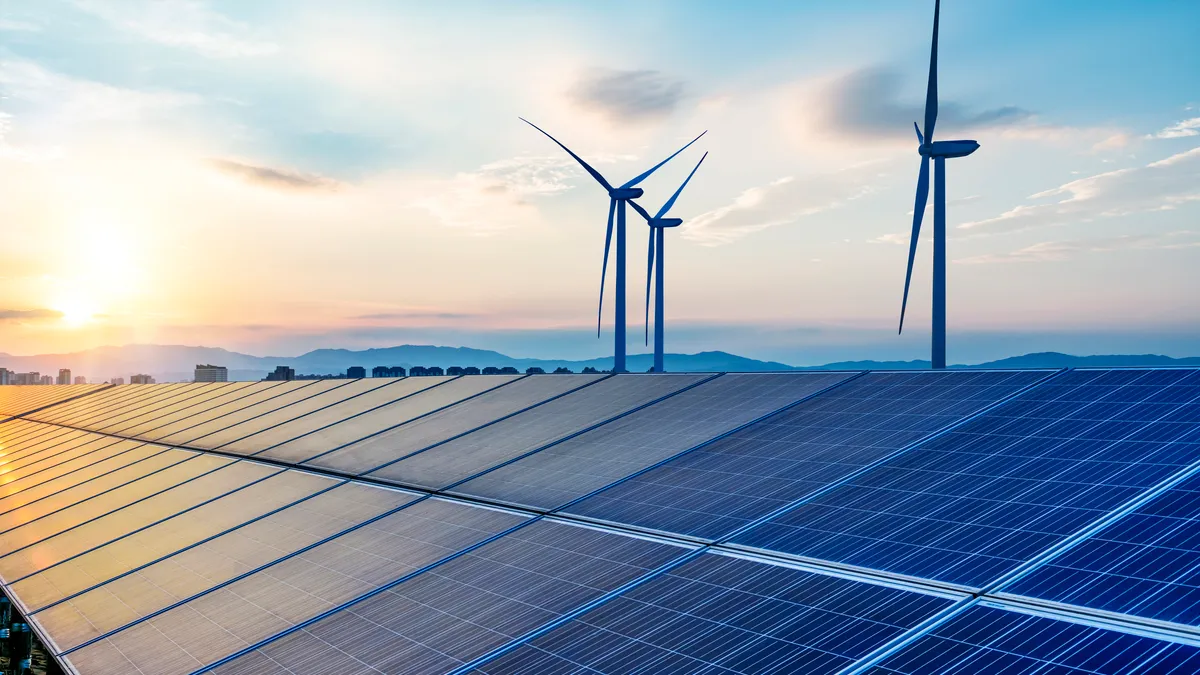Dive Brief:
- Renewable energy advocates believe the Inflation Reduction Act will pave the way for more hybrid storage projects like Wheatridge Renewable Energy Facilities, which opened in Morrow County, Oregon, last week. The joint effort from NextEra Energy Resources and Portland General Electric is the nation’s first utility-scale project combining wind and solar generation with energy storage, according to the companies.
- The installation includes 300 MW of wind, 50 MW of solar and 30 MW of battery storage. The Wheatridge system uses electricity from the solar assets to charge the batteries; the storage can provide continuous power for four hours.
- A NextEra subsidiary built and will operate the combined facility. PGE owns 100 MW of the output, and the subsidiary owns the rest, which it will sell to PGE under 30- and 20-year power purchase agreements.
Dive Insight:
Energy storage projects in the U.S. commonly have been paired with solar installations in recent years, largely because “energy storage was only incentivized under the tax code when it was associated directly and solely with a solar project,” said Gregory Wetstone, president and CEO at the American Council on Renewable Energy. But the Inflation Reduction Act changes that, and “being able to integrate wind into the mix adds a great deal [of value].”
The Inflation Reduction Act also provides an incentive for energy storage as its own asset class, instead of tying it to co-location with other generation, said Jason Burwen, vice president of energy storage at the American Clean Power Association. Therefore, more standalone storage projects are likely coming down the pike, in addition to more wind and other creative co-location projects. A plethora of options exist for combining generation and storage technologies, including pumped hydro, geothermal and hydrogen, he said. Whether and how to combine them comes down to appropriate siting.
“The combination of resources that is most valuable to the grid is going to depend where you put it,” Burwen said. “I hope that this is simply the starting gun for an interesting race to innovate multiple technology choices onto a single site to provide the grid with the power it needs exactly when and where it needs it.”
PGE doesn’t have imminent plans to scale up the Wheatridge installation, but “we will certainly look to Wheatridge for lessons learned and best practices as we transition to a cleaner energy future,” said Allison Dobscha, PGE spokesperson. “We will continue to evaluate the best resource options available for customers and may consider adding additional hybrid resources to our portfolio should they present the best value for customers.”
Wheatridge advances PGE’s decarbonization goals, which align with the rules established in HB 2021, Oregon’s Clean Energy Targets Bill that passed last year. The legislation established that electricity providers must reduce emissions 80% below baseline emissions by 2030, 90% by 2035 and 100% by 2040. Baseline emissions are PGE’s and PacifiCorp’s annual average emissions from electricity sold to customers in 2010, 2011 and 2012.
To help meet these goals, PGE is bringing online 1,500 MW to 2,000 MW of clean and renewable resources and 800 MW of non-emitting dispatchable resources, which could include additional hybrid systems like Wheatridge. In 2020, PGE permanently shuttered Boardman, Oregon’s last coal-fired power plant, and completed demolition last month. At maximum capacity, the Wheatridge facilities will generate more than half of Boardman’s maximum capacity of 550 MW.
“This is exactly the kind of development that we hoped would go forward under the Inflation Reduction Act,” Wetstone said. “This is going to be a really nice example of the kind of project that can ensure that our grid is more reliable and powered without pollution or contributions to climate change.”















